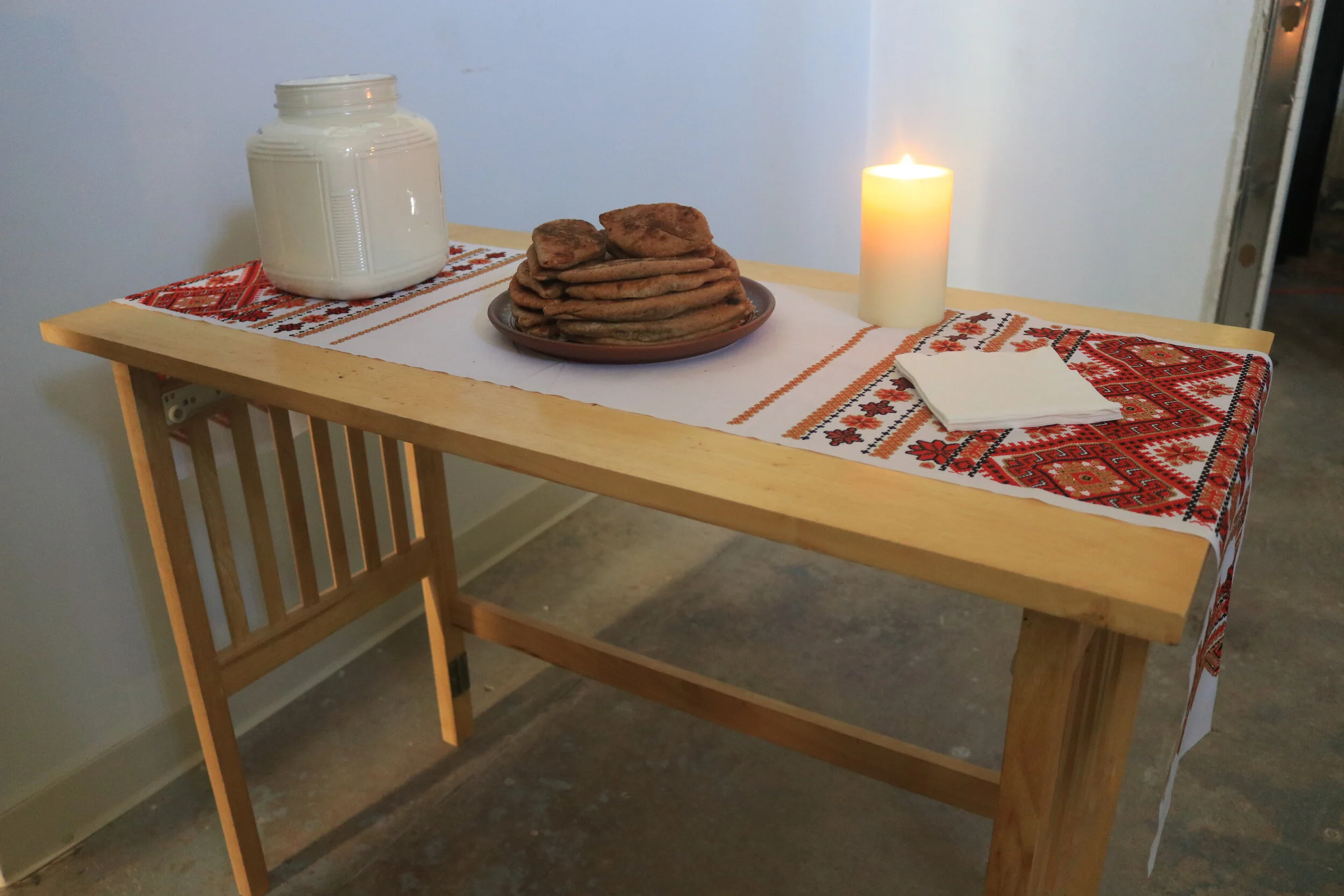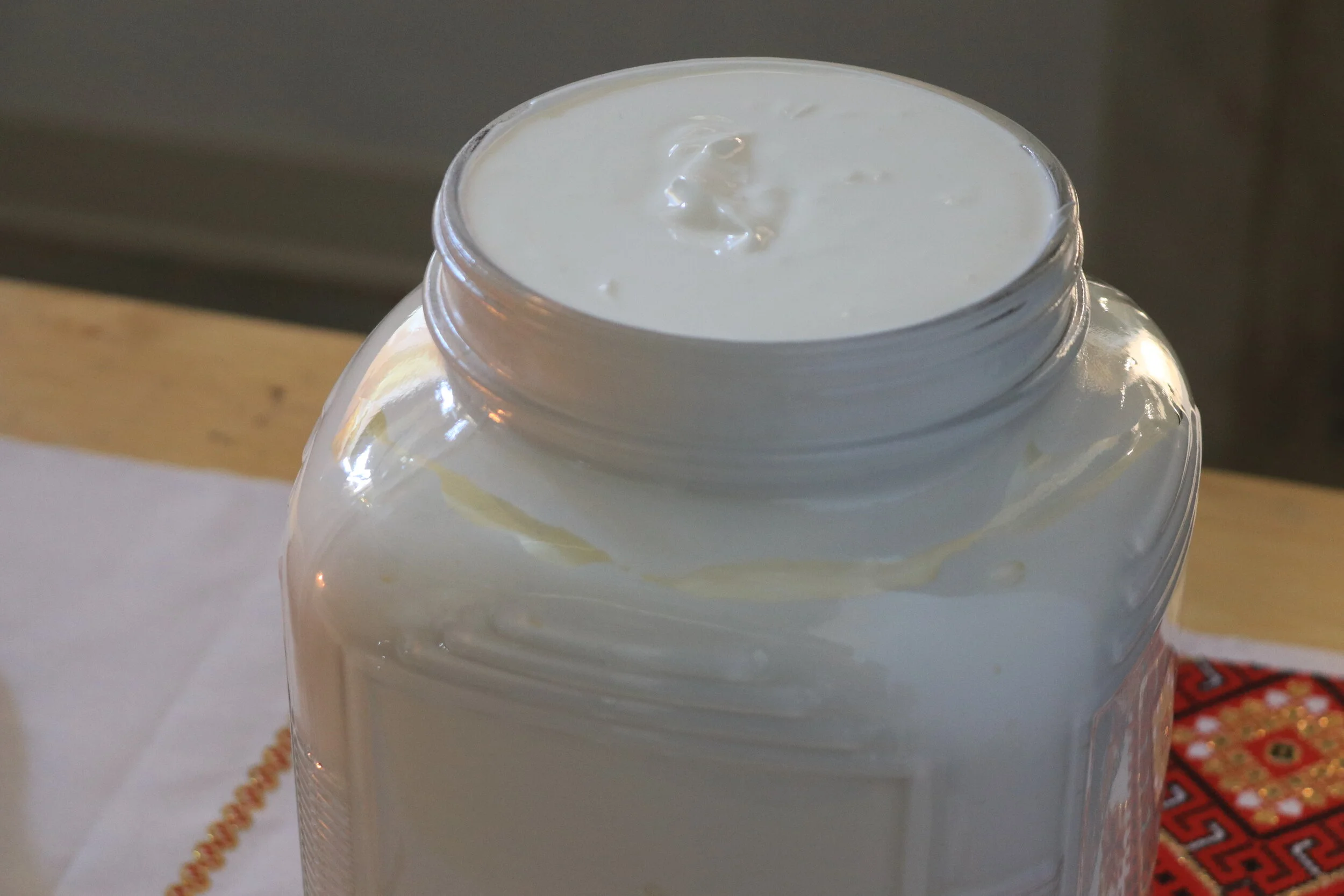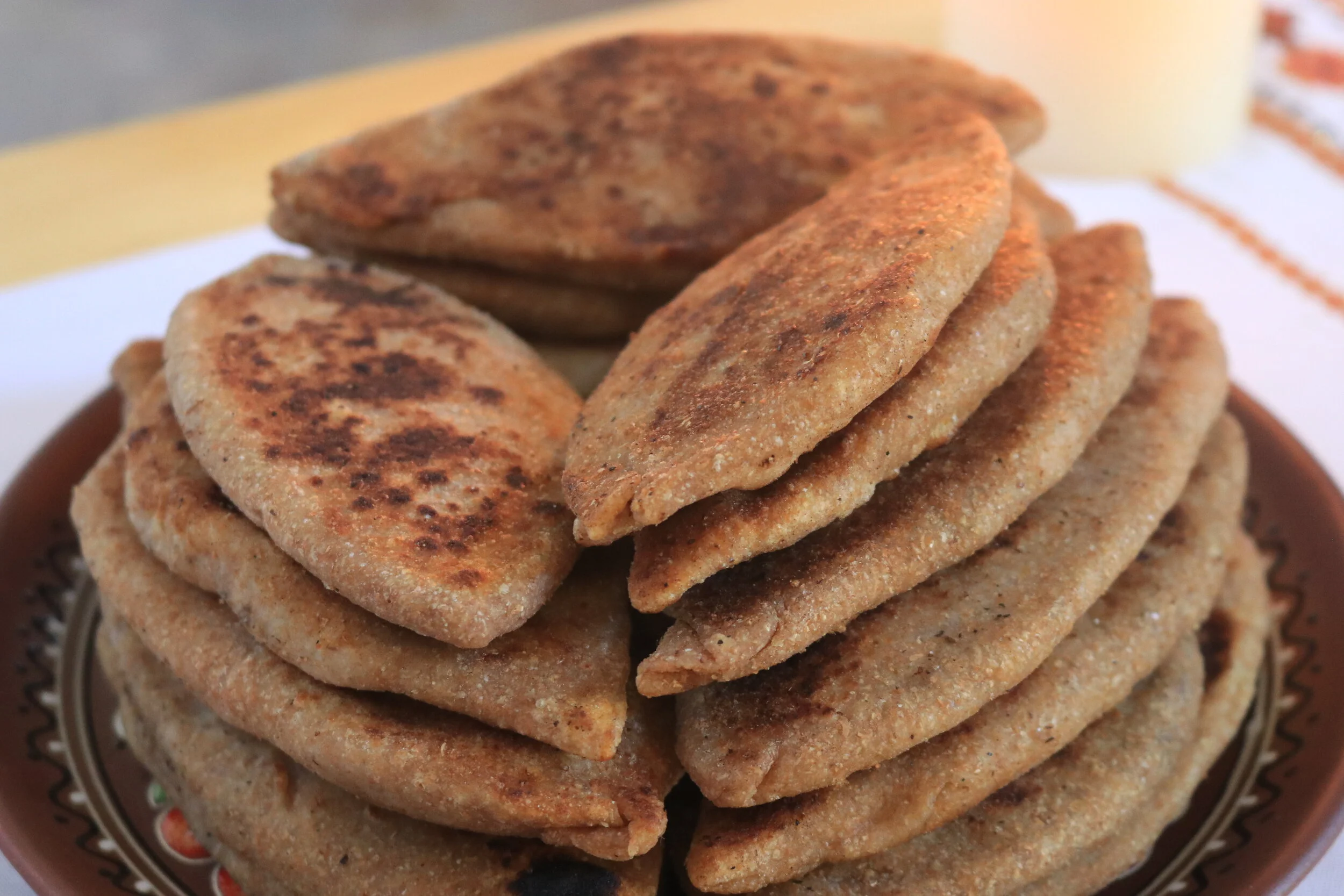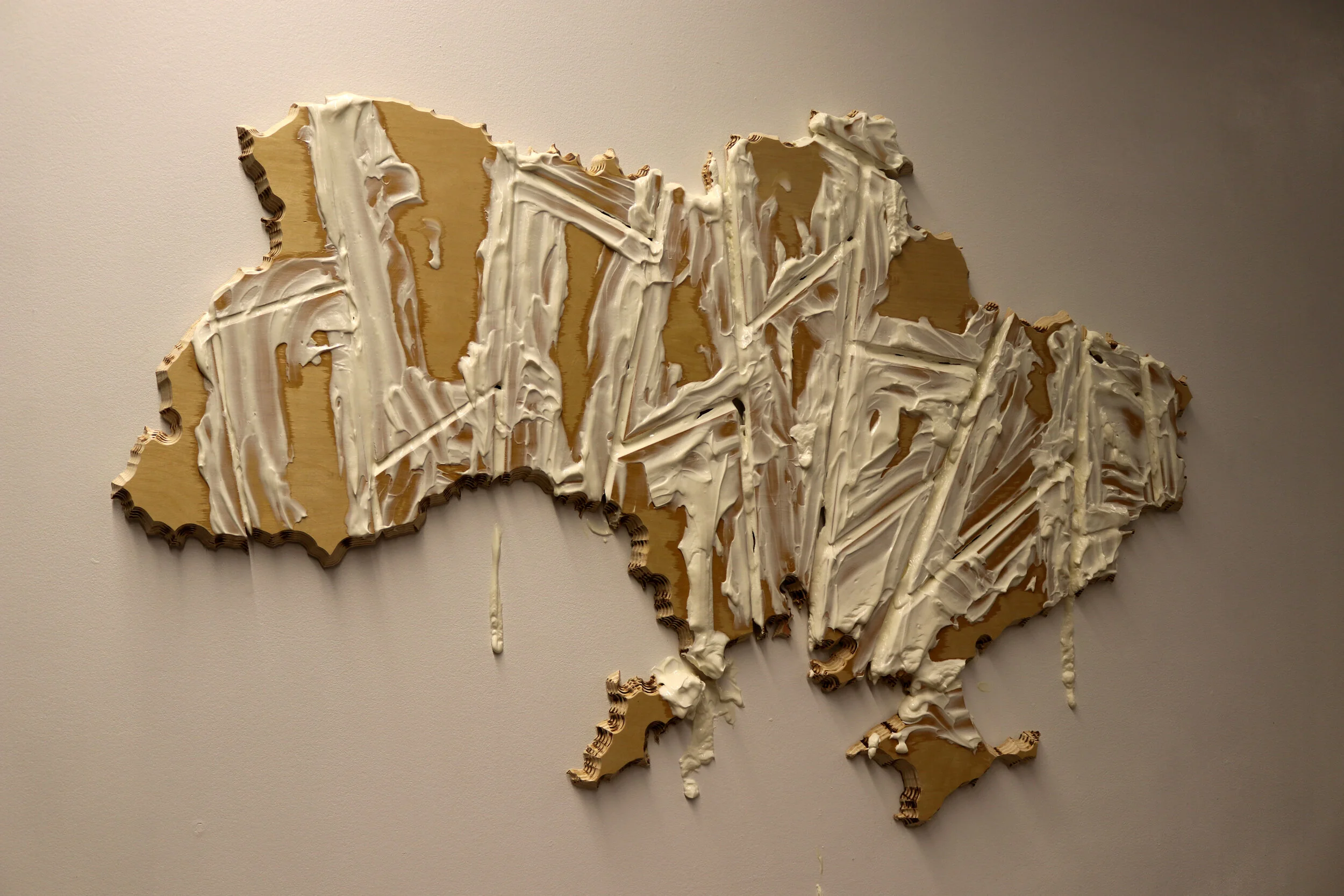









The work “separation anxiety” consists of a Ukrainian plate with warm pierogies (popular food in my country of birth) placed upon a traditional rushnyk (ritual cloth), a large glass jar of sour cream, a wooden fragmented map of Ukraine, completed by video documentation that captured my creation of the pierogies and map. Both the rushnyk and the plate are ornamented with complex geometry and nature-inspired iconography that implies Ukrainian domesticity and the hearth of the home. The golden colors and aroma of the pierogies may incite the participant to reach out and try one, while the white sour cream stands idle, waiting to be scooped as an additive to the prepared meal. The map and projections loom over the presentation, highlighting the juxtaposition of information. The setup may reference a cultural event, or an altar, offering deeper insights.
The piece emerges from my shape-shifting Ukrainian identity, and is my attempt to identify and communicate key traumas and experiences which I have muffled for many years. As an immigrant, my original identity has been lost or transmuted through time, either through cultural rejection, or voluntary dissolution to satisfy conformity. By creating symbolic connections to my experienced pain, I hope to share my adversities, in a way that induces a sense of empathy in the participant. My goal is for the work to create mutual bonds between humans through the topic of trauma, cultural dissonance, and identity limbo.
I look to Kiki Smith's work concerning the body, trauma, and boundaries as a way to recontextualize my pierogies. I similarly think of them as containers of personal hurt, guilt, and injury. The dough forms a literal barrier between the external and the internal, imitating international and cultural borders. The sour cream may be suggestive of healing salve, something that may be applied to injuries in an attempt to heal them. Its accompaniment to the pierogies perhaps soothes the trauma and aids in the process of healing.
I connect the Eastern Ukrainian-Russian conflict symbolic in the fragmented map to the work of Jordan Nassar, and his imagined embroidered Palestinian landscapes: free of conflict, pristine, idealistic. In contrast to Nassar, my landscapes present an ominous imagined future: one full of annexation, separation, and war. My map displays a malformed view of my home country – in desperate need of healing and mending.
This work is emblematic of my transformed identity, and me coming to terms with my perception of my old and new selves. I hope to act as a bonding agent for other immigrants between the past and the present, address the presence of pain and cultural limbo which is burrowed within many migrants, and engage in the process of healing. These experiences can also be used as talking points to unapologetically address personal anxieties, traumas, pain, and to foster understanding and empathy between humans generally.